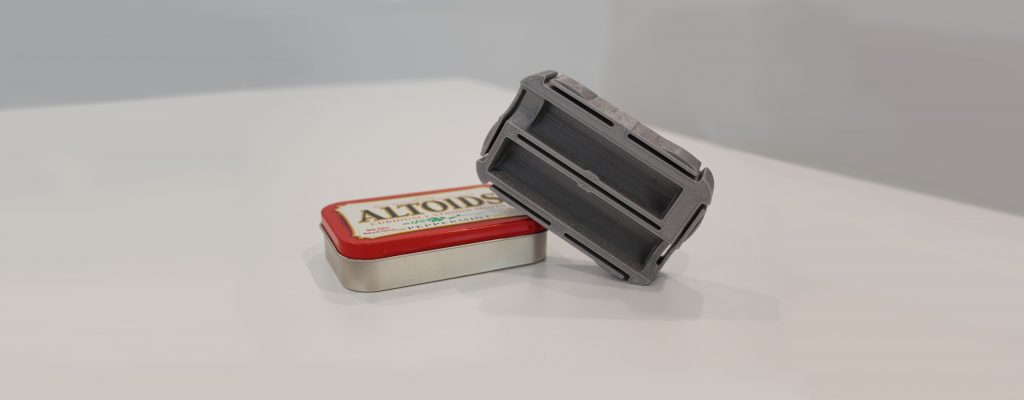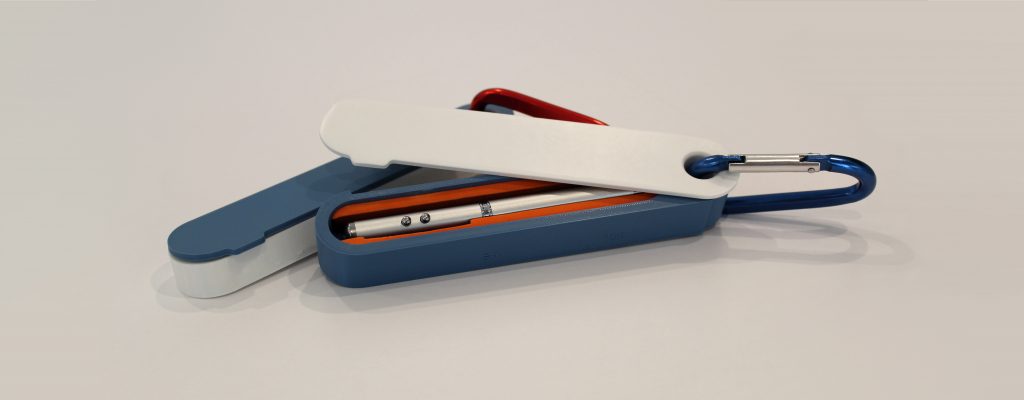
Raiza Newberry-Quiroz
We recently had the opportunity to witness some of the most spectacular displays, experiences, and hottest products at CES 2023. Although we didn’t see anywhere close to everything, we found that our favorite exhibits used automation to solve human problems. Below are our top exciting things that you might have missed.
ROBOTICS: RapidPlan by Realtime Robotics
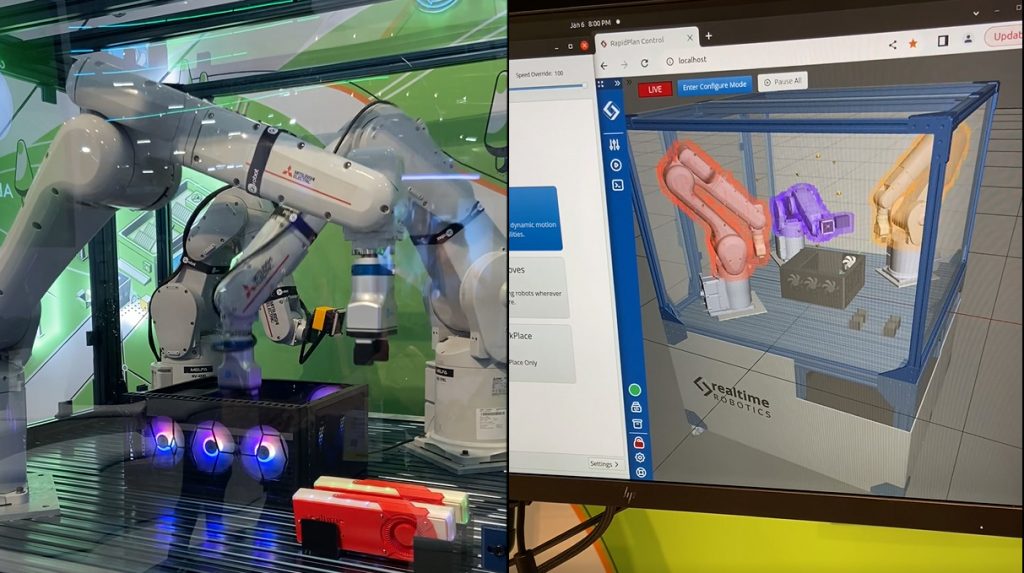
With automation and robotics becoming more present in working human environments, prioritizing safety and easy programming is a must. RapidPlan–motion planning software–utilizes click-and-point technology to program robotic arms while minimizing programming time and avoiding collisions. Traditionally, programming happens one robot at a time. With RapidPlan you provide start and end points, then Realtime’s AI technology creates an automated collision-free path for the robot to follow. Allowing up to 16 robotic arms to be used at a time, RapidPlan integrates CAD, providing user-friendly software for designers and production floor workers to collaborate. The Rapid Plan software includes a feature called “RapidSense,” allowing the sensors on the robotic arm to have a spatial perception for work cell monitoring and obstacle detection in real time. Realtime Robotics is working with industry partners to define a new era in safe, human-robot collaborative automation, where robot motions are defined on the fly. This software is compatible with any type and brand of robotic arms used to perform tasks such as spot welding, assembly, machine tending, palletizing, inspecting, etc.
ACCESSIBILITY: Xander Glasses
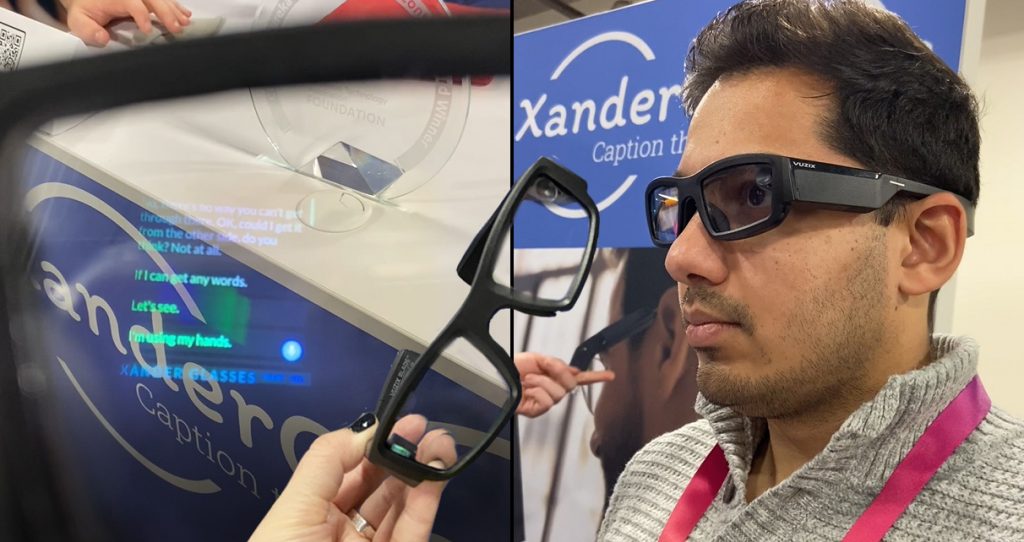
Have you ever wished you had closed captions while talking to someone? Far from just a novelty, providing a real-time speech-to-text translation would be game-changing for those with hearing loss. Xander Glasses are real-time captioning technology that allows the user to read what is being said, without sacrificing visual interactions. Cutting down on development time, the Xander Glasses took advantage of advancements in the wearable industry by working with an off-the-shelf platform, Vuzix Blade 2™ glasses, which features a transparent display on the right lens. Speech-to-text capabilities are built into the Vuzix Blade for the Xander Glasses to not rely on an internet connection, further allowing use in real-world applications. Embedded in the glasses is a noise-canceling microphone, allowing the software to capture clear speech with a 90% accuracy rating, even in loud convention spaces like the CES show floor. Other features include an integrated touchpad, giving users the ability to reposition where they want the captions to be displayed.
AUDIO: ResonX by Edge Sound Research
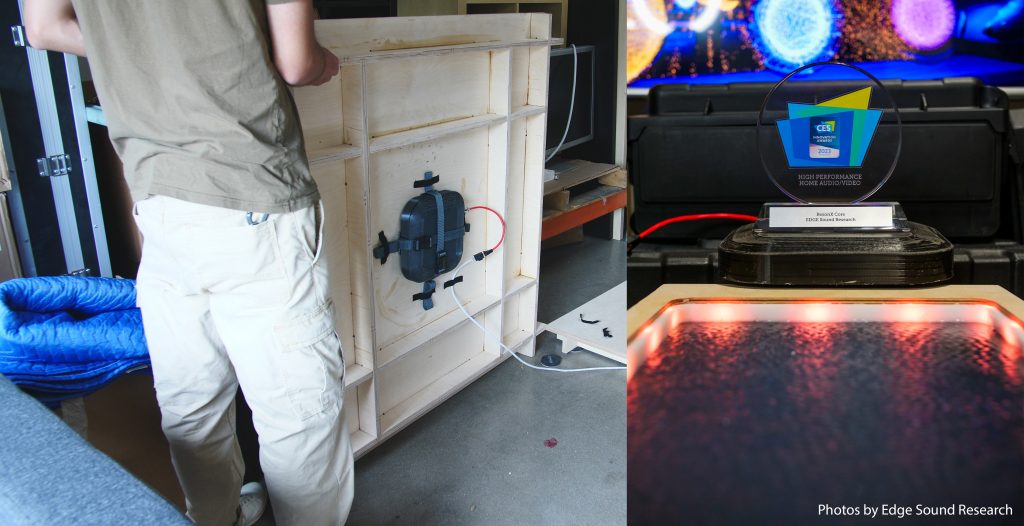
Anyone who enjoys movies in the theater understands the experience of “feeling sound”. The ResonX utilizes patent-pending technology to enhance your listening and visual experience into a full-range sound system for audible and physical audio. The ResonX uses four vibrotactile transducers and vibroacoustic exciters to create a haptic listening experience. The ResonX improves the audio experience by using the transducers and exciters to direct the frequency of what is being listened to into your body through vibration, allowing you to hear and feel sound in high fidelity. Edge Sound Research fitted their booth at CES with ResonX panels mounted in the flooring, embedded into the couches, and hidden in custom-made cushions for users to touch and feel. ResonX engages multiple senses simultaneously, creating an immersive experience. Not only does ResonX enhance users’ audio experience, but it also creates an opportunity to enjoy immersion without a heavy strain on your ears, keeping audio output levels low to prevent years of self-induced hearing loss.
GAMING: Square Off
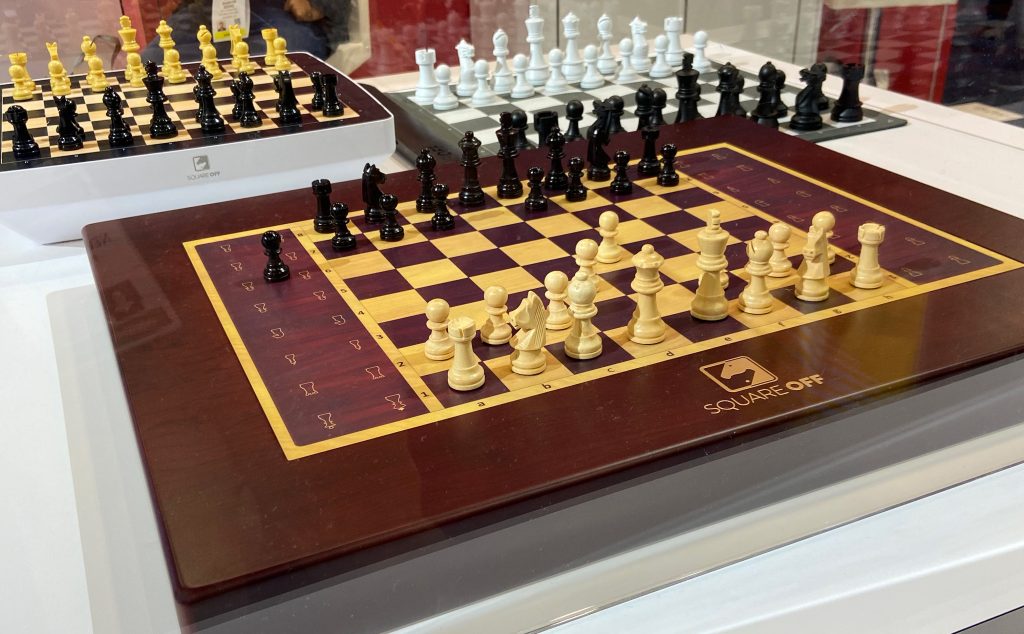
The only comparison I have to this product is the magical chessboard in Harry Potter and the Sorcerer’s Stone. Square Off’s Grand Kingdom Set is a chess board like no other, utilizing an x-y gantry with an electromagnet and pressure-sensitive switchboard. The single magnet moves without disrupting unintended pieces, allowing global remote play against other human players or against their adaptive AI, which matches the player’s skill level, providing a realistic experience to virtual play. You can even use the Grand Kingdom Set to stream chess games onto your board, providing a new dimension to spectating your favorite competitors. Square Off provides an app that can analyze your past gameplay and an automated setup for your board for whichever way you want to play. The Grand Kingdom Set is not only a new way to play individually, but also a way to improve your chess playing skills at any age.
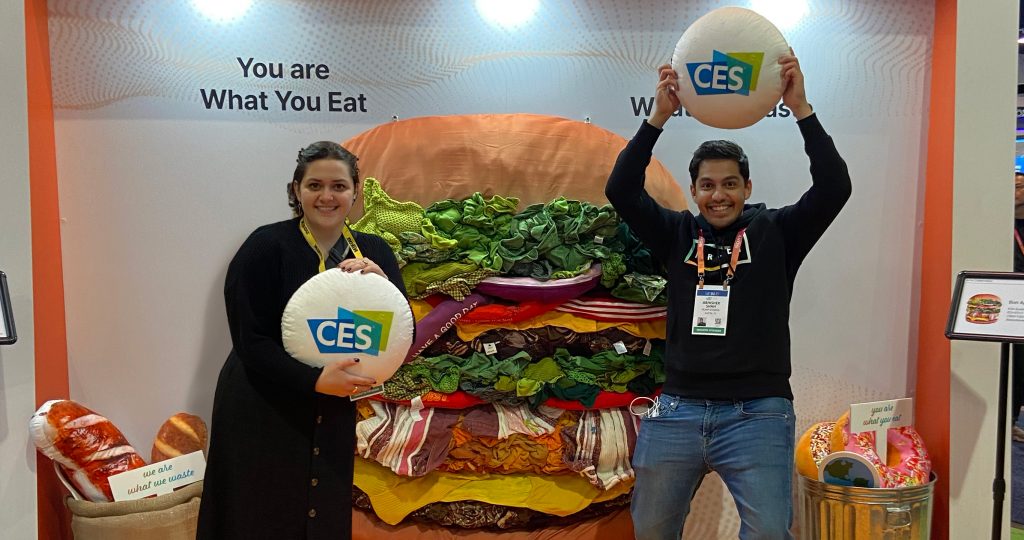
A few years back, CES was saturated with ‘connected’ everything, from wifi-linked hairbrushes to trash cans, but we couldn’t help but wonder if these technological additions were necessary, or if they would even enhance the user experience. Coming back to CES this year, it was nice to see companies finding ways to use connected technology and automation to solve real problems, whether that’s improving safety in automated environments, addressing accessibility challenges, helping encourage human interaction across distances, or simply improving user experience in meaningful ways. CES this year has fueled our excitement for what technological advancements will come in the future.



